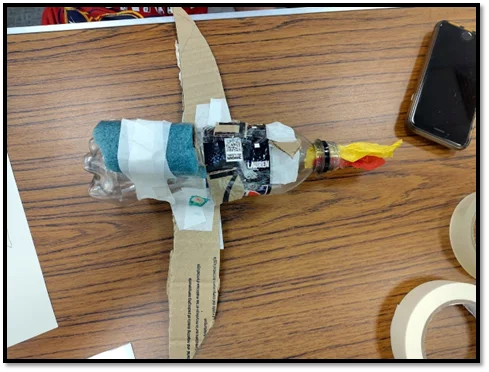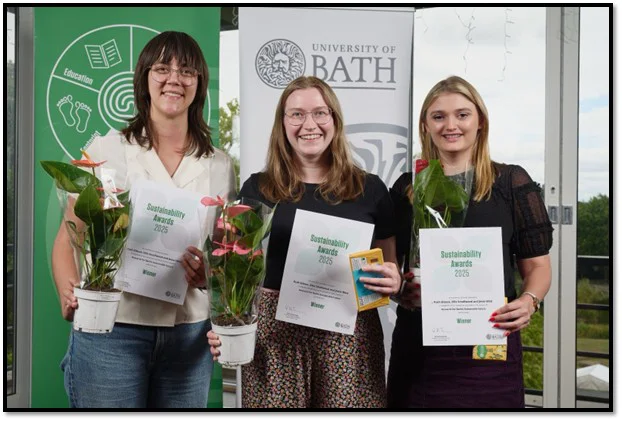What Children’s vision of future mobility can tell us about today
Posted by: Jesse Wise
Collaborative research project uses art-based methods to understand children’s vision of the future
What Children’s vision of future mobility can tell us about today
What is important to you when you travel? Are you a pragmatist – valuing things like speed, cost, and efficiency? Or do you place greater value on the experience, things like comfort, convenience and beauty? Perhaps you value signalling status and wealth, by purchasing the latest SUV model. Or maybe you signal your green credentials as you zip through town on your bike. We know plenty about adults’ travel preferences, and we can segment adults based on their sociodemographic characterises, use cases and psychological variables. People dedicate vast amounts of time and resources to getting transport right for adults and providing options to suit everybody. Yet we’ve left out almost a fifth of the population… we know surprisingly little about what children want.
What children have to say matters. They are competent meaning-makers [3,4], which means they can make sense of the world around them. It’s important that we give them the opportunity to voice their desires for several reasons. The UN declared that children have the right to be consulted on matters which affect them, regardless of their age [1,2]. Their experiences differ to adults [5], and by seeking their views we can create better conditions for childhood, and for society as a whole. Currently, decision-making related to children’s transport is largely in the hands of adults [6]. Mobility is freedom – freedom to socialise, to seek education, to play where they like; mobility is access to an improved quality of life. By consulting children directly, they maintain their agency, and we don’t perpetuate independent/dependent binaries [8].
Not only should we value hearing what children have to say for its own sake, but they may also be able to tell us important things about motonormativity. This is a bias towards cars that adults display where we accept harms from cars that we do not accept from other sources. In a seminal study conducted by Ian Walker, participants did not accept risks to health when air pollution was caused by second-hand smoke and yet they found it acceptable when they were told it was caused by cars [7]. We are not born with biases, they develop as we learn from the people close to us and the world around us. By studying children, 1) we might be able to pinpoint at what age this bias develops, and 2) we might be able to learn what humans value in travel before this bias develops. This second point is particularly important. It’s very difficult to design systems that you can’t imagine. This leads us to our first research question: How do children imagine travelling in the future?
So, if what children have to say about transport matters, what’s the best way to ask them? Traditional interviewing techniques can be intimidating for children. In contrast, arts-based research, data collection where art either replaces or supports traditional interview [9], is participant driven. This minimises power dynamics and creates safety for participants to express themselves. It creates rich imaginative data, capturing insights which can’t always be expressed using oral methods. It also gives participants time to think and reflect while they are in the process of creating. And quite simply… it’s fun. This means you get better engagement from children, and people who might otherwise not have gotten involved in the first place. This leads us to our second research question: Could arts-based methods be an effective way to engage children?
What did we do?
We ran four workshops with the help of our fabulous facilitators (fellow IAAPS members Matt, Lucia, Hannah, and Anna) out of the exhibition room at the Bath Central Library. Each workshop lasted two hours, and children often stayed for the whole time, many wanting to stay even longer. One participant showed up for every single session! As the children dropped in, they were invited to begin by drawing their vision of how they wanted to travel in the future. Then, they could rummage through our recycled materials, where they built their model. As they were building we would approach their parents to explain the study and seek their consent to take part. If they said yes, we held a short (<10 minutes) semi-structured interview with the children. Some also opted to take part in our art exhibition, which we hope to host later in the year.
We’re still in the process of thematically analysing the interviews, and we look forward to sharing our results.

A model produced by a 6-year-old boy. A hybrid RAF spitfire.
How did it go?
The workshops went exceptionally well. We had a great turnout despite limited advertising. Children were strongly engaged, parents were pleased that their children had a creative outlet, and it was a great experience leading and facilitating the workshops. Members of the community have even approached us to continue running these workshops in other spaces!
Ellie Smallwood and I presented this work at the Royal Geographical Society Conference in Birmingham in late August. We shared our preliminary results and reflections on using arts-based methods with the Transport Research Group. Our talk was warmly received with insightful questions and feedback which we will incorporate into the paper.
Our efforts have been recognised by the University of Bath’s Climate Action Team. The project has won the category “Research for Bath’s Sustainable Future”, which recognises excellence for any research which will help pave the way for sustainability within our local community of Bath. You can find out about the other fantastic work by nominees here.

The project won a climate action award in the category “Research for Bath’s Sustainable Future”. From left to right Jesse Wise, Ruth Gibson, and Ellie Smallwood.
What next?
Now we’ll continue analysing the data before writing up a paper for submission. There’s still time to get involved with the project, all levels of experience are welcome – please get in touch with us. Many thanks to the research team and workshop facilitators for their hard work and effort is making this project happen. Thank you to AAPS CDT for supporting and funding our project. Thank you also to the University’s Public Engagement Unity for awarding us an Engage & Involve grant.
Sources
1. United Nations. (1989). Convention on the Rights of the Child. Treaty Series, 1577, 3.
2. United Nations Committee on the Rights of the Child. 2005. General comment no. 7: Impementing child rights in early childhood. viewed 5 August 2013, http://www2.ohchr.org/english/bodies/crc/ comments.htm United Nations. 1989. Convention on the Rights of the Child. Geneva: United Nations
3. Kotsanas, C. 2009. “Sustaining Children’s Participation in Early Childhood Settings? Discourse, Power and the ‘Danger’ of Participation Practices.” Masters of Education diss., University of Melbourne
4. MacNaughton, G., P. Hughes, and K. Smith, eds. 2008. Young Children as Active Citizens: Principles, Policies and Pedagogies. Newcastle, Australia: Cambridge Scholars.
5. Smith, A.B. 2007. “Children and Young People’s Participation Rights in Education.” International Journal of Children’s Rights 15: 147–164.
6. Barker, J. (2003). Passengers or political actors? Children's participation in transport policy and the micro political geographies of the family. Space and polity, 7(2), 135-151.
7. Walker, I., Tapp, A., & Davis, A. (2023). Motonormativity: How social norms hide a major public health hazard. International Journal of Environment and Health, 11(1), 21-33.
8. Smith, K., & Kotsanas, C. (2014). Honouring young children’s voices to enhance inclusive communities. Journal of Urbanism: International Research on Placemaking and Urban Sustainability, 7(2), 187-211.
9. Coemans, S., & Hannes, K. (2017). Researchers under the spell of the arts: Two decades of using arts-based methods in community-based inquiry with vulnerable populations. Educational Research Review, 22, 34-49.